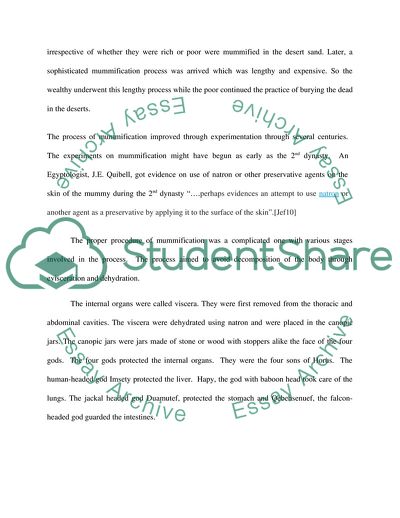Cite this document
(Ancient Egypt Mummification Literature review Example | Topics and Well Written Essays - 2000 words, n.d.)
Ancient Egypt Mummification Literature review Example | Topics and Well Written Essays - 2000 words. https://studentshare.org/history/1744843-ancient-egypt-mummification-the-process-of-mummification-whereby-egyptians-attempted-to-preserve-their-identities-after-death
Ancient Egypt Mummification Literature review Example | Topics and Well Written Essays - 2000 words. https://studentshare.org/history/1744843-ancient-egypt-mummification-the-process-of-mummification-whereby-egyptians-attempted-to-preserve-their-identities-after-death
(Ancient Egypt Mummification Literature Review Example | Topics and Well Written Essays - 2000 Words)
Ancient Egypt Mummification Literature Review Example | Topics and Well Written Essays - 2000 Words. https://studentshare.org/history/1744843-ancient-egypt-mummification-the-process-of-mummification-whereby-egyptians-attempted-to-preserve-their-identities-after-death.
Ancient Egypt Mummification Literature Review Example | Topics and Well Written Essays - 2000 Words. https://studentshare.org/history/1744843-ancient-egypt-mummification-the-process-of-mummification-whereby-egyptians-attempted-to-preserve-their-identities-after-death.
“Ancient Egypt Mummification Literature Review Example | Topics and Well Written Essays - 2000 Words”. https://studentshare.org/history/1744843-ancient-egypt-mummification-the-process-of-mummification-whereby-egyptians-attempted-to-preserve-their-identities-after-death.


